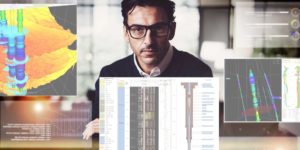Bluware and Interactive Network Technologies, Inc. (INT) Secure Strategic Partnership
Bluware Corp., the digital innovation platform for seismic data, is pleased to announce a strategic partnership with Interactive Network Technologies, Inc. (INT), a leader in multi-domain visualization in exploration and production (E&P). Bluware and INT are early members in the Open Subsurface Data Universe (OSDU), a forum focused on developing a standard that creates a common data platform for all exploration, development, and well data. The standard will transform the way subsurface data is captured, analyzed, and operated.
In Retrospect: 10 Years at INT
Working at INT for 10 years, what has made me show up every morning has been the deep technical aspects of the job, the products I have been able to work on, and the people I interact with. Frankly speaking, these 10 years were also possible because developers at INT are seen as an investment, not a cost. Unlike other companies, INT has a strong will to weather tough economic cycles without shrinking its staff. I have grown with INT, and we both keep growing together.
INT’s Leading Upstream Data Visualization Platform, IVAAP 2.3, Boosts Digital Solutions with Large Dataset Covisualization Capabilities, Machine Learning in the Cloud
Cloud storage connectors, ArcGIS and PPDM integrations are part of the many new features of the latest release of IVAAP (2.3) which pushes the limits of what’s possible in Subsurface Data Visualization in web applications. This version has significantly developed support for visual-based data discovery using map-based search, and is fully integrated with ArcGIS, allowing explorers to search structured and unstructured data in a data lake or any other file repository. IVAAP supports elastic search as well as other search engines and is able to index and read any subsurface data types.
5 Simple Techniques to Avoid Bugs While Programming
Programming is an activity that requires a special set of cognitive skills. While the industry has developed processes and tools to ensure the quality of software artifacts, the act of writing code is a craft in itself. Developers pride themselves on the “big picture” results they achieve, but the activity of programming is definitely a humbling experience: it’s easy to introduce bugs, and regardless of whether I catch them right away or later in the pipeline, I hate to be reminded I am inherently flawed and have introduced a defect. For this article, I will focus on simple methods to avoid bugs, not before or after you write code, but while you write that code.





